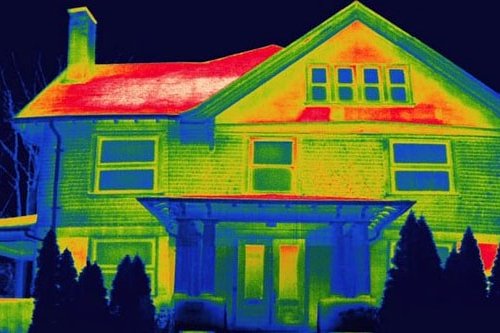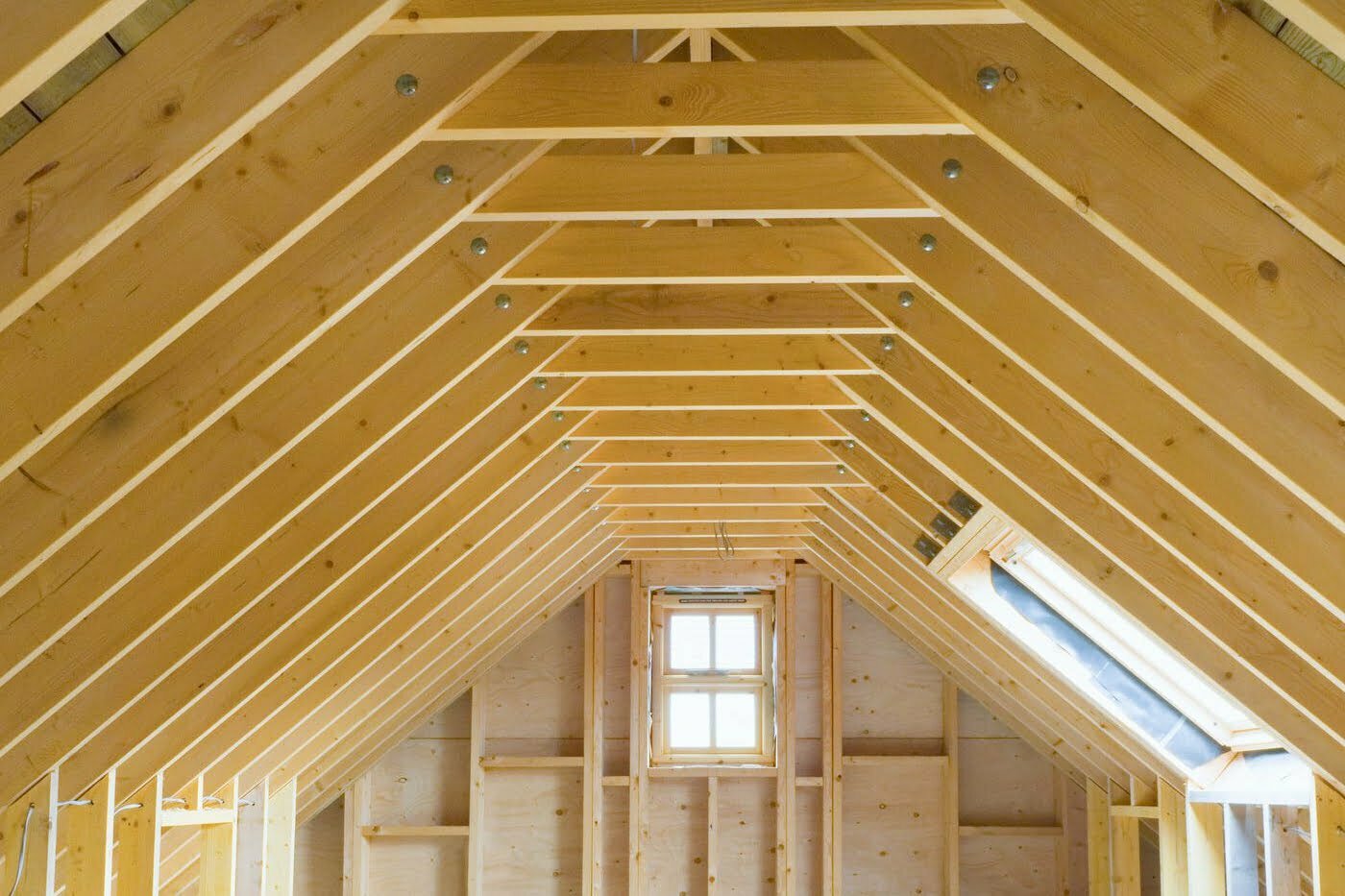Insulating your attic is an important part of creating a comfortable and energy-efficient home. There are lots of insulation options available, but spray foam insulation consistently ranks as a favorite for homeowners. Let’s learn about the fundamentals of attic spray foam insulation, why it’s so popular, and how you can get the best spray foam insulation for attics from Cincinnati RetroFoam.
Introduction To Spray Foam
Your attic might not seem like an important room in your home. After all, how much time do you even spend up there? However, a well-insulated attic can give you significant savings on your energy bills and contribute to a comfortable indoor environment.
The Importance of Attic Insulation
Your attic is more than just a place to store your stuff. The attic plays a major role in maintaining a comfortable temperature in your house. A poorly insulated attic allows for the transfer of heat during summers and cold air during winters, leading to uncomfortable changes in indoor temperatures. This causes your air conditioners, heating systems, and HVAC to work harder, which results in higher energy bills. Plus, poor insulation could lead to other issues like ice dams and pests. So, it’s essential to choose the best spray foam insulation for your attic and not just any run-of-the-mill insulation.
Understanding Spray Foam Insulation
Spray polyurethane foam insulation is a two-part liquid compound that is applied by professional contractors using high-pressure equipment that mixes and dispenses the chemical components. As the two components mix and react, they expand to cure into a rigid, adhered plastic foam between structural members that creates an airtight barrier.
Benefits of Using Spray Foam Insulation
There are plenty of benefits that make spray foam insulation a great choice for attics:
- High insulation value with R-7.4 or more per inch of thickness. This is higher than other types of insulation which provide only around R-3 per inch. The higher R-value of spray foam means a greater ability to resist conductive heat transfer.
- Expands and adheres tightly to fill gaps, penetrations, and seal leaky ductwork in attics. The foam seals all thermal bridging and gaps as it cures, preventing air infiltration that leads to conditioned air loss.
- Adds structural stability and rigidity by stiffening and reinforcing roof rafters and attic framing. The adhered foam helps strengthen the structure against racking forces from wind or earthquakes.
- Extremely long lifespan exceeding 50 years with no decomposition, compaction, or settling over time. Maintains full insulation value for the building’s lifetime.
- Offers low vapor permeability, resisting the accumulation of moisture in humid attic conditions. This controls condensation that could otherwise damage attics.
- Can be applied easily in retrofits or renovations and tailored to fit into complex, custom, or irregular attic layouts.
- It acts as an air barrier to keep out dust and pollen, which is beneficial for indoor air quality.
These qualities make spray foam insulation a popular option for maximizing attic insulation performance, efficiency, and structural enhancement.
Choosing the Best Insulation for Your Attic
Finding the right insulation for your home can be a little tricky to figure out. With so many types of insulation available, you may find that selecting just one can be a challenge. Between spray foam, cellulose insulation, fiberglass batt insulation, and other types, how can you decide which is the best spray foam insulation for your attic?
Thermal Resistance Value
The insulation’s R-value, or thermal resistance value, is the first and most important factor to consider when selecting attic insulation. The R-value indicates the material’s ability to resist conductive heat transfer. The higher the R-value, the more effective the insulation is at slowing heat conduction and saving energy.
For attics, an insulation R-value between R-30 and R-60 is typically recommended based on climate zone and energy code minimums. Spray foam insulations deliver up to R-7.4 per inch, allowing specified R-values to be achieved in half the thickness. This makes installation easier as well.
Moisture Control Capacity
Any attic insulation material must have excellent moisture control properties to prevent condensation-related damage. Humid, unconditioned air can enter the attic space from below. When this moisture-laden air contacts cooler attic surfaces, condensation occurs.
At Cincinnati RetroFoam we recommend open-cell spray foam for attics. If any moisture does enter the attic wall assembly you will want to know that your roof is leaking so the wood does not rot out underneath the foam. Thoroughly discuss moisture control properties with your insulation services provider to specify the best product and installation methods.
Air Sealing Efficiency
Effective air sealing is another imperative for attic insulation materials. Air sealing refers to the ability to fill gaps throughout the attic where exterior air infiltration and interior air leakage can occur. Stopping these drafts enables the insulation to operate most effectively for energy savings.
Spray foam insulation offers unmatched air-sealing properties thanks to its liquid application and robust expansion rate. It conforms tightly to surfaces to seal cracks, gaps, and penetrations. Properly installed spray foam reduces air leakage, helps insulate ductwork, and prevents conditioned air loss – keeping HVAC systems running efficiently.
Environmental Impact and Safety
As a responsible homeowner, you want not only the best attic insulation but also one that is eco-friendly. When selecting a spray foam insulation for your attic application, there are some key considerations related to environmental friendliness and safe use:
- Choose insulation made with zero ozone-depleting substances in their chemical formulation. Responsible manufacturers have designed spray foams to be eco-friendly.
- Look for foams with low VOC content to minimize off-gassing of volatile organic compounds both during and after installation. Low VOC options are available. Proper ventilation is still required during application.
How to Choose the Best Spray Foam Insulation for Your Attic
Selecting the optimal spray foam insulation solution for your attic involves carefully evaluating several factors:
- Check the required R-value for your region: Compare products and ensure the desired R-value is achieved based on insulation thickness. Higher density foams like closed-cell provide higher R-value per inch.
- Evaluate air sealing ability: Denser foams with higher adhesive ratings better prevent air infiltration through cracks, joints, and penetrations.
- Consider environmental impact: Choose zero ozone-depleting and low VOC foams applied with proper ventilation and PPE.
- Determine required thickness: Match to the insulation thickness needed to provide the recommended R-value for your attic space. Account for any space constraints.
- Think about noise reduction: Foams dampen noise from rain and hail far better than other types of insulation to provide consistent sound-deadening.
- Compare insulation costs: Review material and labor costs, but also account for long-term energy savings and effectiveness over the lifetime of the home.
- Customize for retrofits: Foam conforms around wiring, ducts, and odd angles making it a customizable insulation choice.
Ultimately, the performance of any spray foam insulation depends heavily on proper installation by qualified professionals. Knowledgeable local contractors like Cincinnati RetroFoam will ensure your insulation is expertly installed to specification so your home becomes more energy-efficient, comfortable, and safe for decades to come. Their expertise is key to success.
Spray Foam Attic Insulation from Cincinnati RetroFoam
For homeowners who want to maximize attic insulation performance, Cincinnati RetroFoam provides professional spray foam insulation services. Our qualified team expertly applies insulation to create a robust thermal and air barrier in your attic. You can enjoy utility savings and consistent indoor comfort for decades with our long-lasting insulation solution. Cincinnati RetroFoam follows rigorous safety protocols and offers complete attic insulation services to improve your home’s energy efficiency seamlessly. Contact us today to upgrade your attic with proven spray foam technology.
FAQs
How long does spray foam insulation last in an attic?
Spray foam insulation can last for decades in an attic when properly installed. The expected lifespan is typically over 50 years. The structure of spray foam resists moisture, air infiltration, and degradation over time. Proper installation by a professional contractor according to manufacturer specifications is important for maximum durability. Regular inspection of the attic for any cracks, gaps, or deterioration of the foam will help identify any potential issues early. With appropriate installation and maintenance, spray foam can provide effective, long-lasting insulation and air sealing in an attic space.
What R-value is best for attic spray foam insulation?
The recommended R-value for attic spray foam insulation is R-38 or higher. An R-value of 38 provides excellent thermal performance and is commonly recommended for colder climates. Going with an even higher R-value like R-49 may be advised if you live in an extreme climate or want maximum energy efficiency. The higher the R-value, the better the insulation’s ability to resist conductive heat transfer. While spray foam insulation comes at a premium cost compared to other insulation materials like fiberglass batts, it makes up for it by seamlessly air-sealing the attic and providing superior insulation with no gaps. Just make sure to have proper attic ventilation and take fire safety precautions when using spray foam.
Does spray foam need a vapor barrier in the attic?
Spray foam insulation typically does not require an additional vapor barrier when installed properly in an attic space. The foam itself acts as both insulation and a vapor barrier when applied at the recommended thickness and coverage. By sealing small cracks and gaps, spray foam prevents water vapor from penetrating the attic from the living space below. The foam must make full contact with the underside of the roof decking to maintain vapor blockage. An additional polyethylene vapor barrier may be redundant and cause moisture buildup issues when paired with spray foam. Proper ventilation is still needed to allow any moisture that accumulates under the roof to escape. Consult with installation professionals to get recommendations for your particular climate and attic setup.


